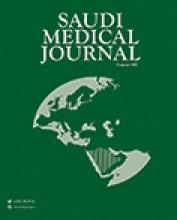Abstract
OBJECTIVE: To compare the effects of spinal anesthesia with those of the open 3-step local anesthesia (TSLA) technique under visual control.
METHODS: Between January 2005 and August 2006, the data of 55 patients undergoing groin hernia repair with either the TSLA technique or spinal anesthesia (SA) were collected via retrospective case note review at the General Surgical Unit of the Ardahan Military Hospital, Ardahan, Turkey. Patient characteristics, preoperative and postoperative measurements prior to discharge, average pain, and nausea during the postoperative hospital stay were recorded.
RESULTS: While there was no preoperative preparation time for the induction of anesthesia in the TSLA method, it was found that a preparation time of 24.56±8.85 minutes was required for the SA preoperatively. The evaluation of the visual analogue scores of both groups yielded no significant differences between the eighth and twenty-fourth hours. When the postoperative complications in both groups were considered, 3 patients had headache whereas 2 had nausea, and 5 had complications of urinary retention in the SA group.
CONCLUSION: Except for the negative factors such as patient refusal, allergic reaction history, previous vaso-vagal episode, or fainting during local anesthesia, incooperability caused by psychiatric disorder or language barriers, the results of the present study indicate that the TSLA is a safe, effective, and appropriate anesthetic technique in the adult age group.
- Copyright: © Saudi Medical Journal
This is an open-access article distributed under the terms of the Creative Commons Attribution-Noncommercial License (CC BY-NC), which permits unrestricted use, distribution, and reproduction in any medium, provided the original work is properly cited.






